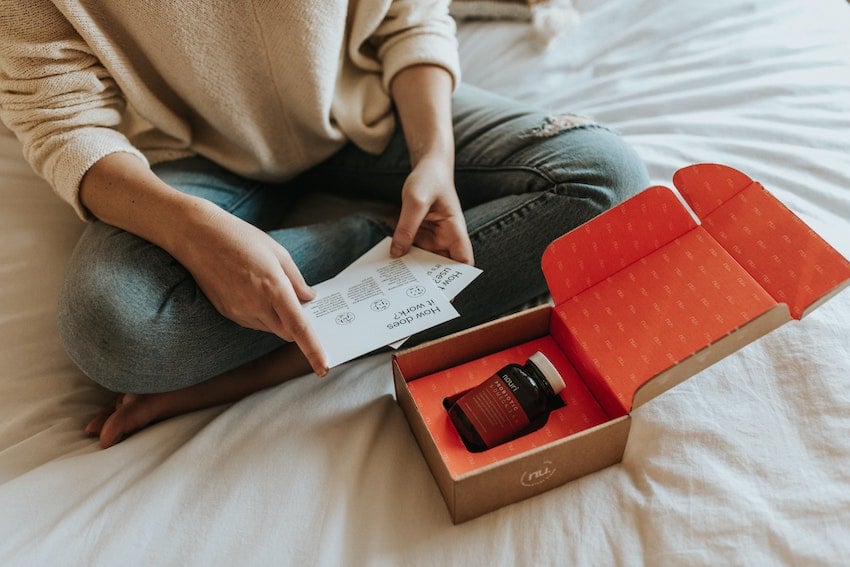packaging research: the e-commerce difference
by: Sarah Kneebone
E-commerce has shifted the way that people shop and overhauled the customer journey we once knew so well.
Packaging is just one touch point in this journey but it is arguably the most important... we're all guilty of judging a book by its cover.
So, how is the growth of e-commerce changing the customer journey (and experience), and the role of packaging?
What should you consider in order to optimise your product's packaging for the online shopping environment?
How could you go about doing this? Read on to find out.
Taking over from bricks and mortar.
Australian e-commerce is growing five times faster than traditional retail and now accounts for roughly 7 percent of total bricks and mortar sales (and the grocery industry is heading this way too. For more on the future of Australian grocery, read our free report 'Fresher Food Faster: Does Amazon spell the end for Coles and Woolworths?').
“The prospect of the online retail industry equaling the FMCG industry in size globally represents a massive shift in consumer habits from the perspective of manufacturers and retailers. It’s the biggest change we will see in our lifetime. Any FMCG strategy that’s not already factoring in e-commerce is missing a big part of the growth story.”
(Nielsen)
According to NAB, Australians spent a whopping $22 billion in 2016, more than 7 percent of total bricks and mortar spend.
Australia’s online retail sales penetration is consistent with other developed economies such as Canada and Japan.
So, where does the power of packaging come into this e-commerce revolution?
"Packaging innovation plays an important role for brands to make the transition from the past retail relationship into this new world of e-commerce"
(Phil Hague)
The online buying experience is wildly different to that of a traditional store, and this means that every aspect of the customer's experience and journey must be reconsidered.
This creates a new challenge for the retailer to make the process more intuitive.
The role of packaging changes.
Getting lost in a crowd.
Using search to your advantage.

1. Grab attention with the visuals.
When rapidly scanning the thousands of choices, your product needs to catch the shopper's eye. Prioritise pack visuals and the quality of your imagery. It's also worth remembering that the majority of online stores are suited to square shaped images.Additionally, make sure you provide reassurance on quantity/volume if you are not able to showcase this visually.
2. Consider the 'unboxing' experience.
This is an opportunity to create loyalty and repeat purchase. If the parcel that arrives makes your shopper feel special and like they've received a gift in the post, rather than just another brown parcel, they're more likely to remember your brand and come back to you again.
You could also add to the customer experience by making sure the packaging fits in a typical mail slot, so your customer has the comfort of knowing it will be delivered.
Many shoppers are hesitant to buy online, so you must exceed their expectations and prioritise their experience in order to keep them coming back for more (this extends to the whole buying experience).
3. Lose the extra weight.
Products with a high price-to-weight ratio are more likely to get buy in from retailers, as they'll cost less for them to deliver.Consider simplifying packaging or changing materials to reduce weight - even introducing sustainable or recyclable packaging to reduce waste.
4. Re-evaluate the role of your product's packaging.
When it comes to fresh groceries, for example, shoppers want to be able to see the product - and there are no sensory cues online. Think about the fresh, 'farmers market' experience that many shoppers look for today.
Imagery which incorporates packaging is a barrier to this experience, and as many shoppers already lack confidence in the freshness of online purchases, it might be worth going bare.


Packaging research is the essential first step in the pack design (or redesign) process.
Download our 8 top tips to help you navigate this complex journey, maximise opportunities and avoid the common pitfalls here:
If you're looking for some advice on updating your packaging for e-commerce, give us a call on
02 8097 0200 or send an email to hello@playmr.com.au
read it, love it, share it.
about the author
Sarah Kneebone
Sarah is PLAY’s go-to content writer with a passion for marrying creativity and communication with clever strategy. A former marketer with PLAY and for international brands such as QBE Insurance and General Motors, Sarah moved home to the UK to raise her little family and start a health coaching business. Luckily for us, she continues to share her talent for the written word with the team in Australia.




ask the author